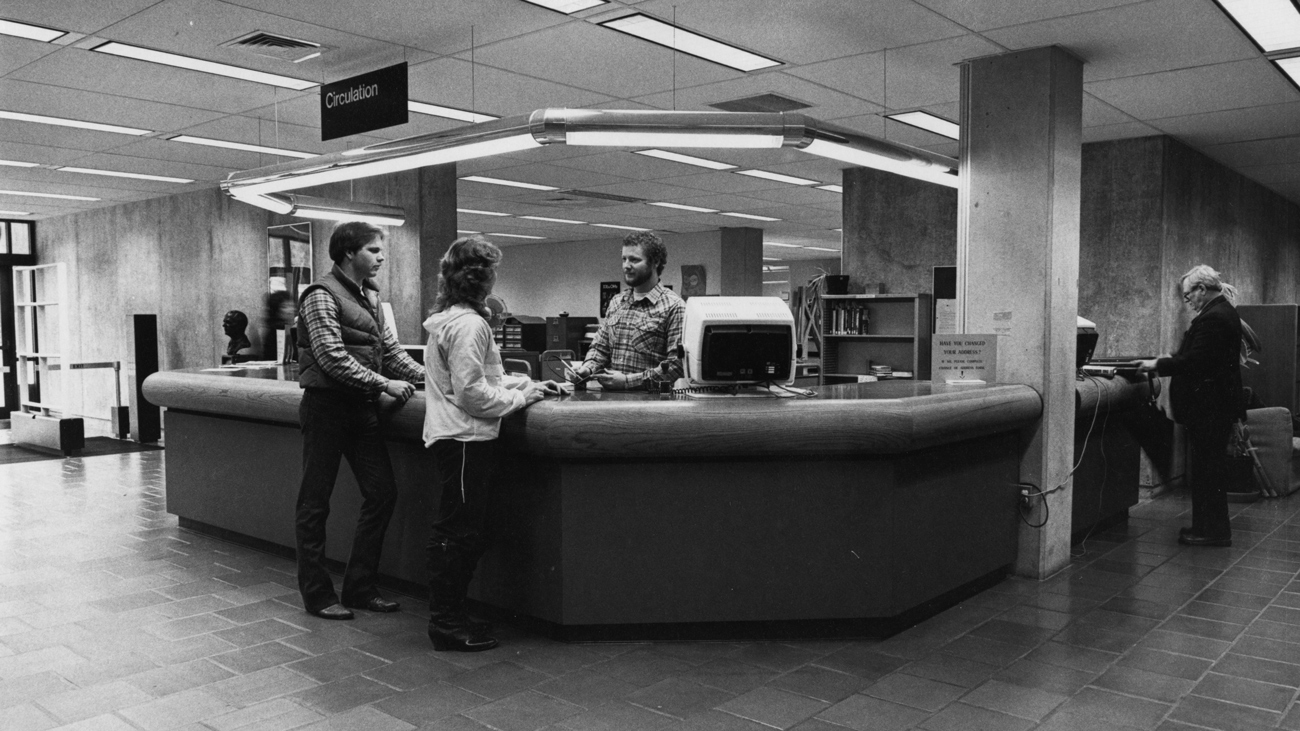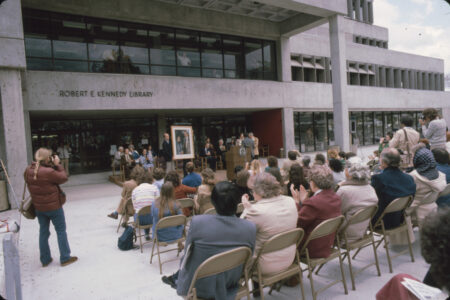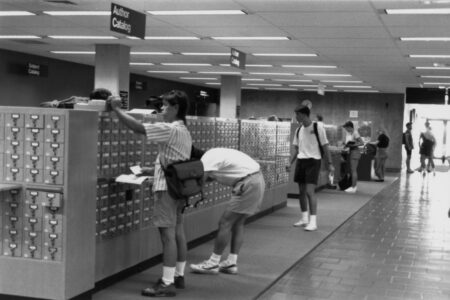Cal Poly’s Library, Past and Future
Kennedy Library is Cal Poly's current library, but what was here before that? Look back at the history of the campus library, which stretches back 120 years.

Although Cal Poly has had a library since 1903, it wasn’t until the opening of the Dexter Memorial Library in 1948 when campus had a space specifically designated as the Cal Poly Library. As enrollment tripled, Dexter quickly became overwhelmed, and the Dexter Annex was added to double the size of the library in 1962.
The vision for the Kennedy Library emerged by the mid-1960s, though it would take another 15 years before the project was realized.
The 1968 Master Plan proposed a new library building adjacent to Dexter. Marquis Associates of San Francisco completed working drawings for the 205,000-square-foot library building in 1971, but campus still had to wait on a budget allocation from the state to actually fund the project.
By 1977, students joined the call for funds: a petition for state funding was signed by more than 7,000 students, bound into a book and presented by ASI President Ole Meland to the governor on the steps of the Capitol Building in Sacramento. Soon after, in July 1977, the state legislature budgeted the allocation of construction funds, approved by Governor Edmund Brown Jr. The 1977 bid for construction was $9 million.
The site selected for the library was previously occupied by temporary wooden barracks and mess halls built during World War II. The structures were used for faculty offices and laboratories for architecture and child development.
Marquis Associates, known for several significant public housing and education projects in the Bay Area, designed the new library to match similar contemporary projects including Yosemite residence hall, the Architecture Building (1977), Fisher Science Building (1977) and the first Vista Grande (1972).

Dedicating the Kennedy Library at its opening in 1981. Image courtesy of University Archives, Special Collections.
The campus broke ground on the new building on March 17, 1978, and the building opened to the public in January 1981. At the dedication ceremony, recently retired Cal Poly President Emeritus Robert E. Kennedy — who had himself served as campus librarian in the 1940s — remarked that it was “a special day to recognize the essential function of a library in the educational process, whether it be a little struggling school as Cal Poly was in 1940 or a university with a great reputation — as Cal Poly is today.”
The new library was three times larger than Dexter and provided seating for 2,500 students, shelving for 625,000 volumes, three rooms for typing, five photoduplication rooms and a full staff to manage the expanded collections. An innovation, the “Automated Retrieval Service,” allowed students to request computer searches, completed by trained librarians, for a fee of $10 and an approximate wait time of three to four days.

Students searching for titles in the Kennedy Libraryʼs original card catalog, circa late 1980s. Image courtesy of University Archives, Special Collections.
Over the past 30 years, more than 180,000 Cal Poly students have taken advantage of Kennedy Library’s resources, whether it be meeting with librarians and consulting information resources, to collaborative working in library “fishbowls” and study rooms, taking a snooze in the study carrels or grabbing a cup of coffee at Julian’s.
We are excited to imagine what the next thirty years will bring.
INTO THE FUTURE
In summer 2023, the library embarked on the exciting Transformation Project, which includes major infrastructure upgrades to improve comfort, energy efficiency and accessibility. For more about the project, visit the project’s website.


